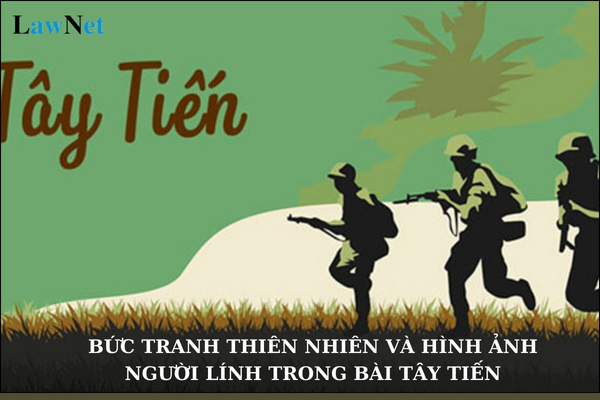Vietnam: What is the sample analysis of the natural scene and the image of soldiers in the poem "Tây Tiến"? What literary knowledge does the 12th-grade Literature curriculum cover?
What is the sample analysis of the natural scene and the image of soldiers in the poem "Tây Tiến"?
"Tây Tiến" by Quang Dung portrays a picture of the majestic, poetic, fierce, and harsh Northwest nature. In such a setting, the image of the soldiers emerges with tragic, heroic, and romantic beauty.
Students can refer to the sample analysis of the natural scene and the image of soldiers in the poem "Tây Tiến" below:
|
Analysis of the natural scene and the image of soldiers in the poem "Tây Tiến"
“Sông Mã xa rồi Tây Tiến ơi, Nhớ về rừng núi nhớ chơi vơi.”
“Dốc lên khúc khuỷu dốc thăm thẳm, Heo hút cồn mây súng ngửi trời.”
- The poetic, lyrical beauty: + Besides the fierceness, Northwest nature is also depicted with a poetic touch: “Nhà ai Pha Luông mưa xa khơi.” + The scenes blurred in rain resemble a watercolor painting. Nature becomes a source of inspiration, soothing the harshness of the march. “Người đi Châu Mộc chiều sương ấy, Có thấy hồn lau nẻo bến bờ.”
“Anh bạn dãi dầu không bước nữa, Gục lên súng mũ bỏ quên đời.”
“Mắt trừng gửi mộng qua biên giới, Đêm mơ Hà Nội dáng kiều thơm.”
“Rải rác biên cương mồ viễn xứ, Chiến trường đi chẳng tiếc đời xanh.”
|
Note: The content is for reference only!

What is the sample analysis of the natural scene and the image of soldiers in the poem "Tây Tiến"? What literary knowledge does the 12th-grade Literature curriculum in Vietnam cover? (Image from the Internet)
What literary knowledge does the 12th-grade Literature curriculum in Vietnam cover?
Under sub-item 2, Section 5, of the General Education Program for Literature issued with Circular 32/2018/TT-BGDDT, the literary knowledge in the 12th-grade Literature curriculum in Vietnam includes:
- The cognitive, educational, and aesthetic functions of literature
- The consistency between theme, ideology, and predominant inspiration
- Some manifestations of artistic style in folk literature, medieval literature, modern literature, realism and romanticism trends; the artistic style of the author
- Certain elements of legendary stories, novels (modern and postmodern), modern lyrical poetry, comedy, memoirs
+ Legendary stories: theme, character, language, artistic techniques; evaluate the role of magical elements in legendary stories, relate to the role of these elements in folk tales
+ Novels (modern and postmodern): language, psychological developments, character actions
+ Modern lyrical poetry: language, images, symbols, allegorical, surreal elements
+ Comedy: language, character, situation, satirical techniques
+ Reports, diaries, or memoirs: non-fictionality, description, narration; combining real details, and events with the writer's experience, attitude, and evaluation
- Psychological developments of characters and the ways authors express them
- The relationship between the narrator, and perspective in expressing the theme of the text
- Basic understandings of Ho Chi Minh aiding in the comprehension of some exemplary works of this author
- A brief history of literature and the role of foundational literary knowledge in text comprehension.
In Vietnam, how many lessons are there in the 12th-grade Literature curriculum per year?
Under Section 8 of the Appendix of the General Education Program for Literature issued together with Circular 32/2018/TT-BGDDT, the number of lessons in the 12th-grade Literature curriculum is specified as follows:
Program duration at each grade (in terms of lessons)
| Grade 1 | Grade 2 | Grade 3 | Grade 4 | Grade 5 | Grade 6 | Grade 7 | Grade 8 | Grade 9 | Grade 10 | Grade 11 | Grade 12 |
| 420 | 350 | 245 | 245 | 245 | 140 | 140 | 140 | 140 | 105 | 105 | 105 |
At the upper secondary level, each grade is allotted an additional 35 lessons for elective academic topics.
Thus, according to the above regulations, the 12th-grade Literature curriculum has 140 lessons in a year.

